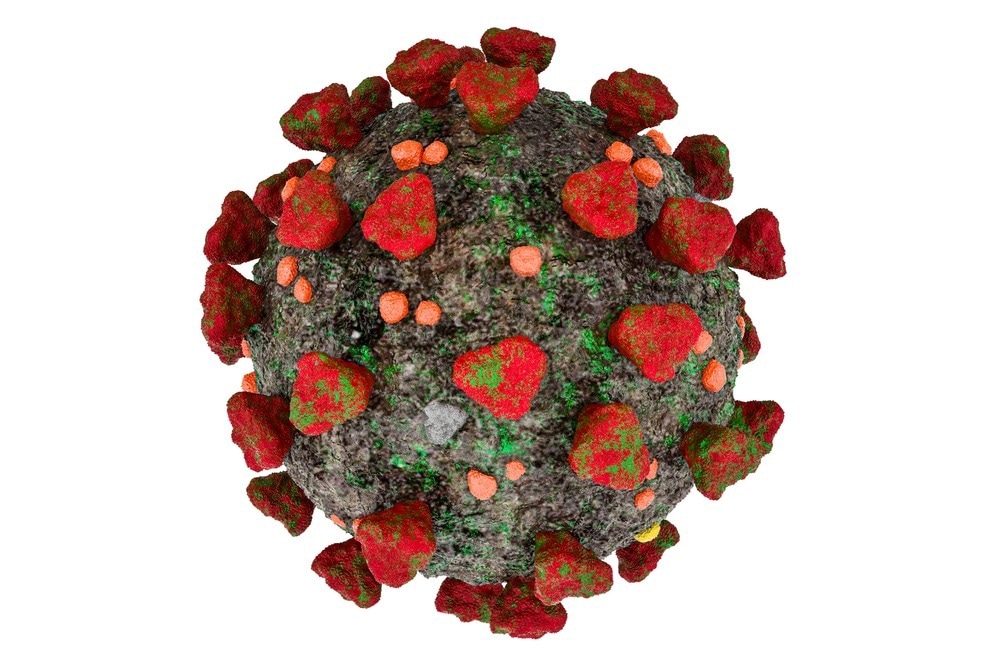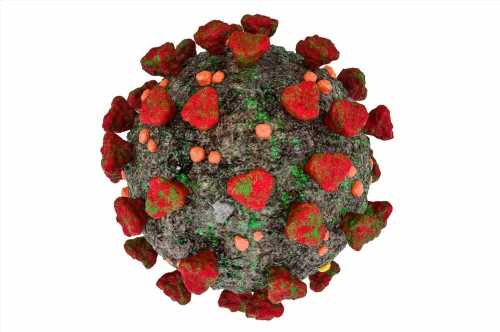How the Omicron variant shifted the biology of SARS-CoV-2
The current coronavirus disease 2019 (COVID-19) pandemic has been caused by the rapid outbreak of the severe acute respiratory syndrome coronavirus 2 (SARS-CoV-2). Several SARS-CoV-2 variants of concern (VOCs) have emerged; however, the Omicron variant possesses a phenotype that is significantly different as compared to previous variants, such as the Beta or Delta variants.
In a recent Nature Microbiology study, researchers discuss how immune evasion and reduced virulence are a new endocytic entry mechanism and significant antigenic change within the spike protein of new SARS-CoV-2 VOCs like the Omicron variant.

Study: Omicron: a shift in the biology of SARS-CoV-2. Image Credit: natatravel / Shutterstock.com
Background
When the SARS-CoV-2 Omicron variant was first identified in South Africa, it exhibited significant changes, particularly in the spike protein, which led to concerns about a new global wave of infection. There was also significant uncertainty about vaccine effectiveness, as all vaccines had been developed on the basis of the spike protein of the original strain of SARS-CoV-2.
In the United Kingdom, SARS-CoV-2 was monitored by the members of the COVID-19 Genomics UK (COG-UK) Consortium and public health agencies by high-throughput sequencing. These scientists determined that the Omicron variant had replaced the previously dominant circulating Delta variant at a rapid pace; however, early analysis showed that this variant caused less severe disease.
In the current study, researchers analyze the immune evasion characteristics of the Omicron variant through the use of immune function assays and estimates of global vaccine effectiveness. To gain more insights into the causes of reduced disease severity, the researchers also studied the biological properties of the virus in vitro.
Study findings
Samples were collected from individuals who received vaccines in the COVID-19 Deployed Vaccine Cohort Study (DOVE). From these samples, researchers quantified spike-specific T-cells and neutralizing antibodies to estimate vaccine effectiveness in the Evaluation of Variants Affecting Deployed COVID-19 Vaccine (EVADE) study.
Significantly reduced neutralization of the Omicron BA.1 and BA.2 variants was observed. The reduced neutralization was observed in the sera from those who had received two or three doses of the COVID-19 vaccine; however, T-cell responses were relatively preserved. These findings were consistent with the marked reduction in global vaccine effectiveness, which was somewhat restored following booster vaccination.
To determine the causes of immune escape, researchers analyzed the virological properties of the Omicron variant in vitro. To this end, unlike preceding variants, Omicron did not induce cell-cell fusion.
Normally, cell-cell fusion occurs due to activation of the spike protein by the cell surface transmembrane serine protease 2 (TMPRSS2) at the cell membrane. However, the Omicron variant enters cells through a TMPRSS2-independent endosomal entry pathway, which leads to altered cell tropism of the virus.
The researchers also conducted experiments using chimeric spike proteins and observed that the impaired cell-cell fusion was caused by certain changes in the receptor-binding domain (RBD) of the spike protein. Further endosomal entry was found to be associated with changes in the S2 domain. These major changes in the biology of the virus are responsible for the global spread of the Omicron variant and its decreased virulence.
Future outlook
Genetic sequencing has been able to correctly predict the immune evasion characteristics of Omicron. It is likely that future vaccines using high-scale genomic data will encapsulate multivalent designs. These multivalent designs would incorporate the genetic variation of circulating variants at the time or may also strive to stimulate responses to target more conserved epitopes.
The researchers reported that sequencing data does not predict the change in the viral entry mechanism. This was inferred through several laboratory observations of reduced syncytia formation in cell culture.
More in vitro studies are needed to further understand the mechanisms governing alterations in cell tropism and clinical disease severity. As novel recombinant variants arise, experiments with chimeric spike proteins could be particularly useful.
Future research could provide greater insights into the principle mutations within the RBD and S2 regions of the spike protein and their roles in determining cell entry and cell fusion. Given that the evolution of SARS-CoV-2 is likely to present further challenges in the future, such studies will provide crucial insights into the virulence of newly emerging variants.
- Omicron: a shift in the biology of SARS-CoV-2. Nature Microbiology. (2022). doi:10.1038/s41564-022-01149-1.
Posted in: Molecular & Structural Biology | Medical Science News | Medical Research News | Disease/Infection News
Tags: Antibodies, Cell, Cell Culture, Cell Membrane, Coronavirus, Coronavirus Disease COVID-19, covid-19, Evolution, Genetic, Genomic, Genomics, High-Throughput Sequencing, in vitro, Laboratory, Membrane, Microbiology, Omicron, Pandemic, Phenotype, Protein, Public Health, Receptor, Research, Respiratory, SARS, SARS-CoV-2, Serine, Severe Acute Respiratory, Severe Acute Respiratory Syndrome, Spike Protein, Syndrome, T-Cell, Vaccine, Virus

Written by
Dr. Priyom Bose
Priyom holds a Ph.D. in Plant Biology and Biotechnology from the University of Madras, India. She is an active researcher and an experienced science writer. Priyom has also co-authored several original research articles that have been published in reputed peer-reviewed journals. She is also an avid reader and an amateur photographer.
Source: Read Full Article



